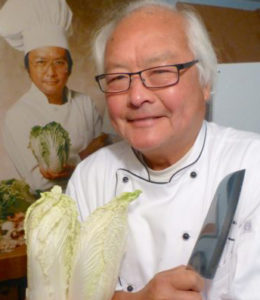Wok & Roll by Peter Kwong, (Frederic) Inter-County Leader
» Download this column as a Word document
It irks me when I hear people say, “Oh, I can’t eat Chinese food. It gives me a headache and makes me ill.” But as much as I don’t like that statement, there is certainly some truth to it.
No, eating Chinese food won’t give you a headache, but the MSG added to the food might. Yes, a lot of folks are sensitive to monosodium glutamate, myself included.

The Food and Drug Administration has classified MSG as a food ingredient that’s “generally recognized as safe,” but its use remains controversial. For this reason, when MSG is added to food, the FDA requires that it be listed on the label.
So, out of curiosity, I checked out all the foods in our household: snacks, soups, salad dressings and seasonings. Lo and behold, there is MSG in each and every one of them. Then I conclude that MSG, like sugar and salt, is not bad for you when used in the right proportion.
However, a lot of restaurants want to reduce their production costs. So, instead of using expensive herbs, spices and extensive cooking procedures to make the food tasty, they just add a spoonful of MSG instead. It is bad business and it is a lose-lose situation, as when guests get sick, they simply won’t return again.
MSG is a food enhancer invented by a Japanese food scientist during the WWII era. It is an extract made from seaweed and vegetables. MSG itself has no flavors, but food that is laced with MSG somehow does taste better. It is a trick that MSG plays with our brains.
On the back of our tongues, there are thousands of pores that let the brain know how the food tastes. When contacted by MSG, all the pores open up and we enjoy the fullest flavors of all five basic tastes — sweet, sour, bitter, umami and salty. And mmm, everything tastes great.
However, when we’re done with the meal, those pores close up, and at the same time withdraw the water content from different tissues around the area; that’s when the troubles begin. First, I’ve got to drink gallons of water (or pots of tea), as my throat just went dry; second, I’ve developed a slight headache; and third, I’ve begun to sweat. But those symptoms happen only when I eat at certain restaurants.
For many years, researchers have found very little connection between MSG and the sickness it causes:
- Headache
- Sweating
- Nausea
- Chest pain
The largest MSG manufacturer, Aji-No-Moto, actually is here in the states. These days, instead of making them from extracts of seaweeds, they are made from corn glucose that is put through the same fermentation process, which is similar to the one used to make yogurt, beer and soya sauce.
No, Aji-No-Moto did not pay me to endorse their products (even though they should), but I just want to clear the statement that, “Chinese food gives you headaches and makes you sick.” And even if the chef uses a small amount of MSG to enhance the flavors of their dishes, it is perfectly OK. It’s those places that use tons of MSG to create the flavors that cause all the problems.
Come to think of it, how can those buffet restaurants that charge $5.95 to $6.95 for “all you can eat” survive? And the price also includes your beverage and desserts! How do they even make a profit? You get the answers right? Buy cheaper products and make them taste great by adding tons of MSG. You pay little and get plenty in return. Everybody is happy!
Next time when you open a bag of BBQ-flavored potato chips and find out that the more you eat, the more you want to go for a beer or a soda, think twice, my dear friends.
Go to phkwong.com for more columns and to purchase his book, “Wok & Roll.”



